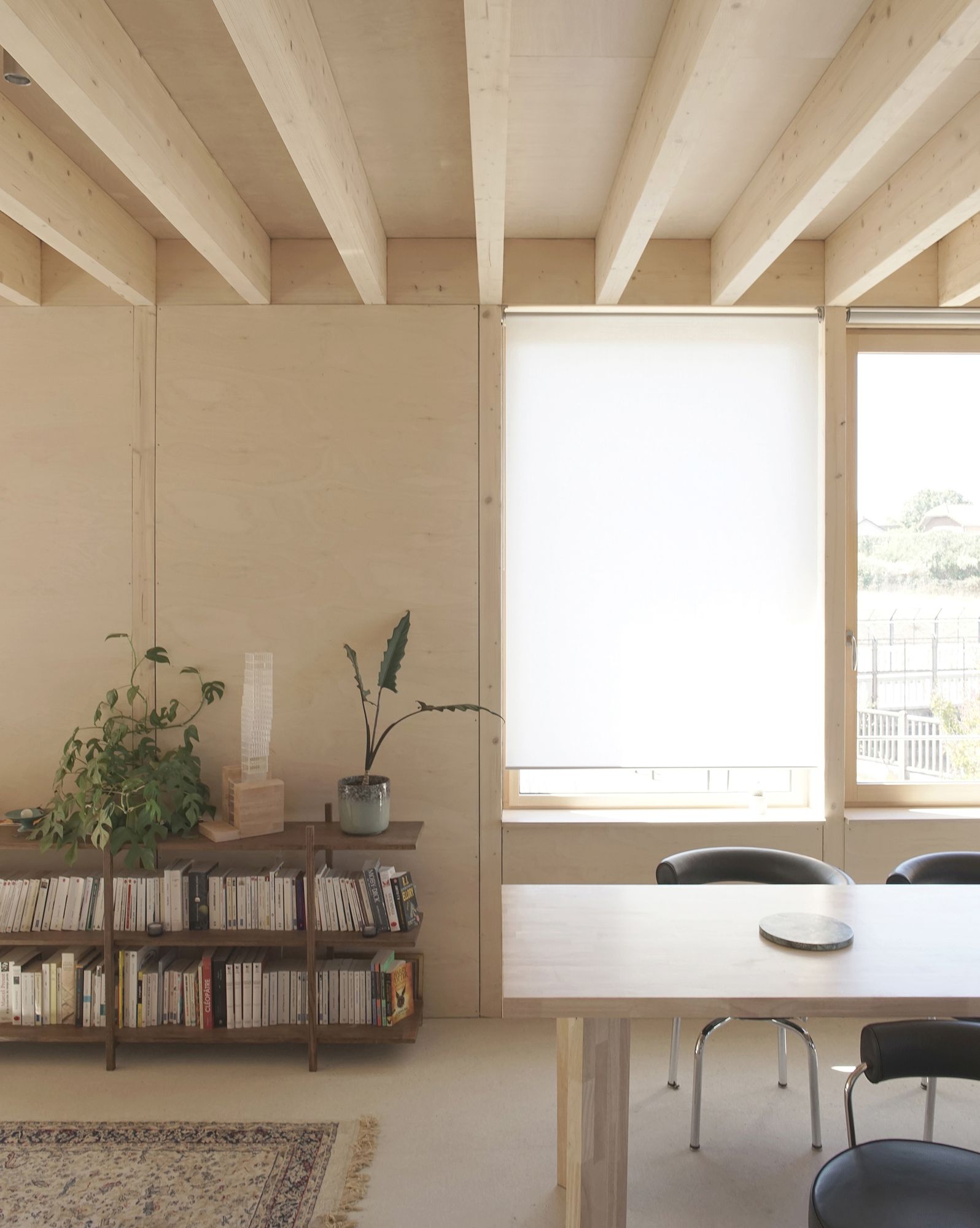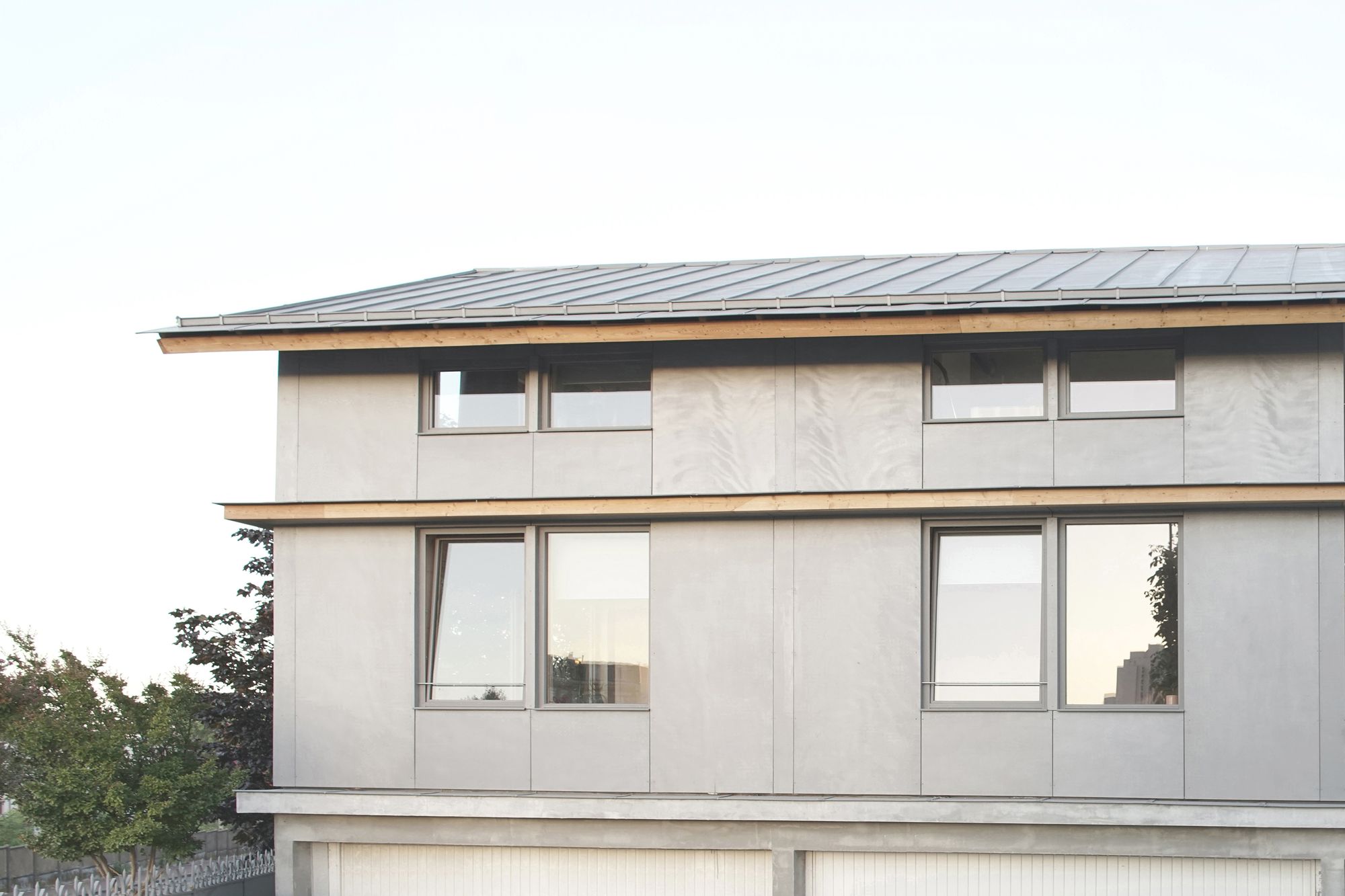Suspended House is a minimal residence located in Paris, France, designed by Office Muto. The suspended house aims to respond to the desire of townspeople to reach nature and calm while still living in the city. The project consists of a light wooden structure erected above an existing garage to create a small townhouse. While the situation of a house with such a small plot (15×5,5m) without a garden is quite exceptional and unwanted in this part of the Parisian suburbs, the project uses this lack as an opportunity to propose a new typology.
A concrete structure around the existing garages on the ground floor allows to create a new suspended ground level dominating the surroundings — ready to welcome the light wooden structure of the building. While two third of the slab are used for the house itself, the rest enables to create a generous terrace and garden.
The windows are placed according to the surrounding trees of the neighbourhood and the newly created garden in order to offer the feeling of being surrounded by nature. The clear and distant view provided by this arrangement also allows very various lights from any direction to get into the house at any moment of the daily course of the sun. The trees and the subtle rays of light filtered through their leaves enable a silent atmosphere of calm to emerge in the perpetual movement of the city. In this sense, the project allows to feel not only literally suspended from the ground, but also from the city and its intense rhythm. As would a weekend house do, the space inspires the feeling of being in the suspended moment — out of time — allowing to permanently balance with the active city life.
The interior wooden materiality results from the constructive technique in order to create a rhythmed system that brings the panel, the wood frame and the beam ceiling together as one single coherent space. This precision in the details and the simplicity of the plan creates a space that is sober and yet dense in its expression — a space that leaves a lot of room for the life it welcomes and its various possibilities.
Photography by Alexandre Pavlidis













